Compostable and biodegradable stand-up pouches are a more environmentally friendly packaging material. This is because they are easier to break down and are safe for the environment when disposed of properly. In this article, we’ll take an in-depth look at two types of bags, compostable and biodegradable stand-up pouches.
1. Typical application fields of compostable and biodegradable stand-up pouches
Compostable and biodegradable stand up pouches are very stable when filled. Their vertical structures offer a great solution for retail packaging. It makes the bags stand out on display racks and retail stands. This stand-up pouch has a wide range of uses.
They are used to package a range of products including:
- Sweet and savory snacks: Nuts, dried fruit, granola, beef jerky
- Miscellaneous: Processed and frozen foods, beverages, tea or coffee mixings.
Outside of the kitchen, bags are primarily used in the following verticals:
- Outdoors: Fertilizers, lawn chemicals, seeds and insect control
- Pet Food: Dogs, Cats, Birds, and Fish
The beauty industry also uses compostable and biodegradable stand-up pouches. Here, pouches are used to package jewelry (necklaces, earrings, and so on) and cosmetics (hard wax beans in bulk, lipstick, and so on). These pouches are also used for industrial packaging of various products.
2. Benefits of choosing compostable and biodegradable stand-up pouches
Compostable and biodegradable stand-up pouches offer the following advantages:
1) Less pollution
By using these biodegradable stand-up pouches, you can reduce the amount of carbon you emit into the environment. You can also help preserve the resources needed for new packaging, as these can be reused. The compostable nature of the bags also has a positive effect on reducing pollution levels in soil, water bodies, and air.
2) Economic benefits
Packing in these bags helps simplify waste management, saving you money. This way, you too can play your part in corporate social responsibility by going green. Research proves that companies that engage in corporate social responsibility are more successful. This is because they identify with consumers who are sensitive to environmental protection.
3. Types of compostable and biodegradable stand-up pouches
There are several types of compostable and biodegradable stand-up pouches. include:
1) Compostable stand-up pouch with handle
These hold substances more firmly and are non-toxic when frozen. They also guarantee the supply of oxygen to the contents packed within them. Compostable stand-up pouches with handles include a moisture barrier.
They are also made from reusable and compostable raw materials. These properties help keep the product in the package free from damage, grease, or water. This type of portable packaging makes it easy to store and transport.
2) Recyclable stand-up pouch
These offer various advantages and opportunities for cost-cutting. They can fit so many units on one track. Recyclable stand-up pouches minimize supply costs and disruptive emissions. It requires less material to produce than other packaging. The process uses a few resources, which are readily available if you choose to take advantage of them.
3) Kraft paper bag
Kraft Bags feature recyclable packaging made from recycled kraft paper. The interior is lined with aluminum foil to protect the filling from moisture. This compostable and biodegradable stand-up pouch comes in a variety of arrangements and forms. Thanks to its moisture barrier, the bag is ideal for storing nutrients and medicines.
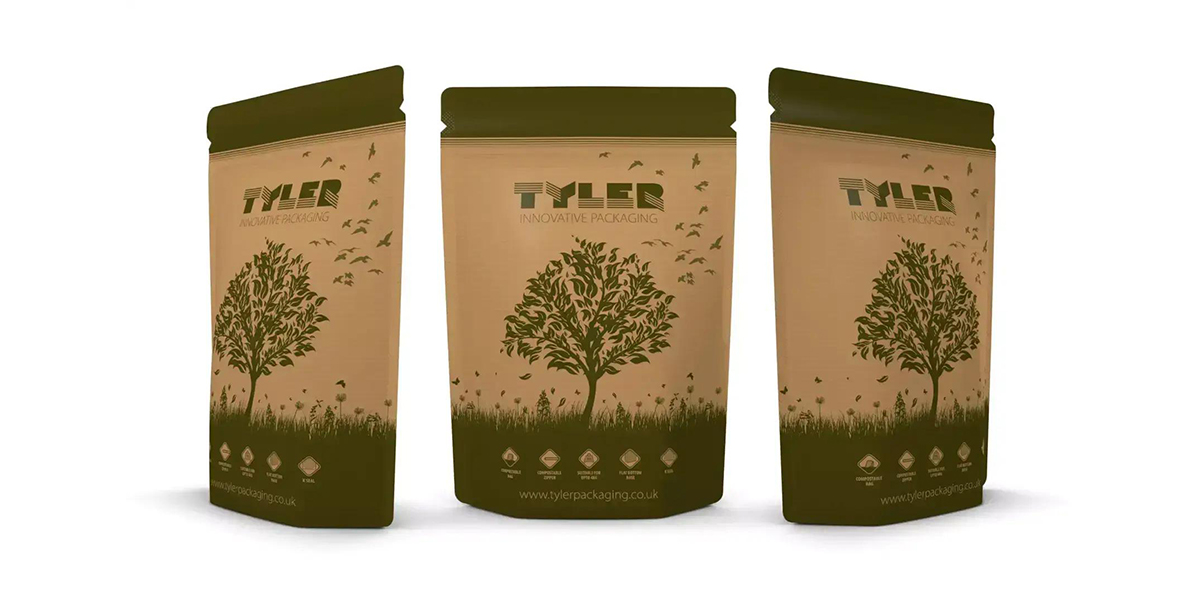
4. What are compostable and biodegradable stand-up pouches made of?
For our compostable and biodegradable stand-up pouches, we use a range of highly sustainable and innovative materials on the market. All of our materials are rigorously inspected and vetted to ensure quality and sustainability. The inspection also established that the materials we use are reusable, recyclable, compostable and biodegradable.
Here are a few categories of materials we use:
1) Laminate
These include certified bio-based lamination films that ensure high barrier properties of the resulting stand-up pouches. Laminates are derived from a variety of raw materials including sugar cane, cellulose, paper and metal. Often, the choice of laminate material depends on the customer’s unique application and intended sales channel.
2) Kraft paper
We use high-quality kraft paper to make some compostable and biodegradable stand-up pouches. Our kraft paper options are white kraft, ivory kraft and plain brown kraft. Each of these material options is available in standard thicknesses of 80-230 gsm. However, we can always increase or decrease material thickness to suit your application.
3) Film
Film material is usually a single-layer film for less heavy content filling. These can be made from LDPE, PLA/PBAT or PE films. Note that all of these are certified compostable and bio-based film materials suitable for a variety of packaging applications. Other compostable and biodegradable stand-up pouches are made using bubble wrap made from 100% recycled materials.
5. Sustainability properties of compostable and biodegradable stand-up pouches
The packaging industry, institutions and evolving customers are concerned with the environmental impact of packaging. Flexible packaging is one of the environmentally friendly options. First, it requires less capital to produce and package goods in the smallest packages imaginable. This packaging also produces fewer emissions and generates less waste. Manufacturing pouches requires about 75% less energy than alternative packaging. This produces about 10% of carbon monoxide emissions.
6. Design considerations for compostable and biodegradable stand-up pouches
Properly disposed of, compostable and biodegradable stand-up pouches are designed for attractive aesthetics. Not only that, but it protects its content and improves your business’s bottom line results. Well-designed stand-up pouches also reduce material and energy usage. They require less space during transport and on display shelves.
Here are some considerations to help you get started designing custom compostable and biodegradable stand up pouches.
1) Goal
When designing any type of packaging for your product, you need to consider your end goal. Determine if the pouch is the main package or just part of it. Also, consider whether the bags will remain on the shelf, or whether they will be transported from one location to another. Basically, you should consider your distribution channel and design a bag that can withstand the type and amount of handling that will be present in it.
2) Material and durability
How long do you want the bag to last on the shelf and after use? The answer to this question should guide you in choosing the ideal material and construction for your ostomy bag. Remember, compostable and biodegradable stand up pouch material choices should not be based solely on your preferences. Instead, it should also be based on your audience’s needs as well as your budget. Proper material selection should be based on consumer, distribution channel, presentation and safety requirements.
3) Printing
If you choose to print a stand-up pouch, you may want to consider the technology to be used and other related matters. Remember that the graphic design of any packaging is usually its biggest selling point. So you need to pay attention to the fonts and colors you use in your designs.
Surface finish (gloss, matte, etc.) is also a key factor to consider. Other factors to consider when designing this type of bag are your target price point as well as the construction design. In general, your choices regarding size, material, and design can affect the overall outcome of your compostable and biodegradable stand-up pouch design.
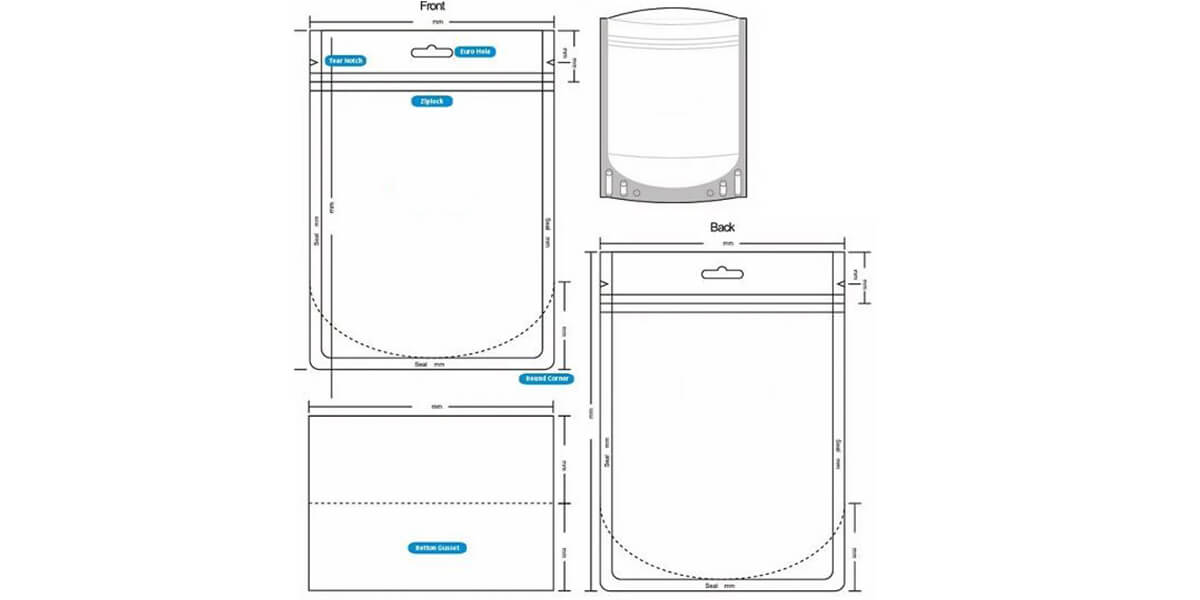
7. The difference between biodegradable stand-up pouches and degradable stand-up pouches
Biodegradable stand-up pouches are made from plant material. On the other hand, degradable stand-up pouches are made of chemical additives containing heavy metals. Their differences are as follows:
- Environmentally Friendly: Biodegradable stand-up pouches require less energy and less money to produce. As a result, less harmful fumes are released throughout the production process.
- Customization:The biodegradable option comes in a variety of designs, unlike other bags that have a regular cunning that makes them less appealing.
- Cost-effective: Biodegradable packaging requires minimal investment. So it’s less involved than other stand up pouches. Therefore, it is easy to buy wholesale stand up pouches.
- Custom printing: The biodegradable bag has a wide front and back. It can also be custom printed, which reduces labor intensity and is less expensive.
8. Available thickness of compostable and biodegradable stand-up pouches
Each design of compostable and biodegradable stand-up pouches contains 14,000-76,000 components. It has to do with size and material thickness. Available in standard or custom sizes, these bags are made from 100% professionally compostable resources.
The sustainable material composition is 125 microns thick and has a higher oxygen and vapor barrier. A transparent window makes it visible. The biodegradable stand-up pouch features three layers of metalized PLA and PLA that provide a high oxygen and vapor barrier. It also has a 100% biodegradable zipper.Is a good example of sustainable flexible packaging
9. Standards for compostable and biodegradable food and pharmaceutical stand-up pouches
Various internationally recognized standards are used to regulate the quality and safety of compostable and biodegradable stand-up pouches. Standards include:
- FDA – Food and Drug Administration.
- GMP – Good Manufacturing Practice.
- HACCP – Hazard Analysis Critical Control Point
- BRCGS – British Retail Consortium
- ISO – International Organization for Standardization
- GMI – Graphical Measurement International
When purchasing these bags, always ensure that the final product meets the above criteria. If there are specific industry standards (by application type), make sure the bags meet those standards to avoid non-compliance.
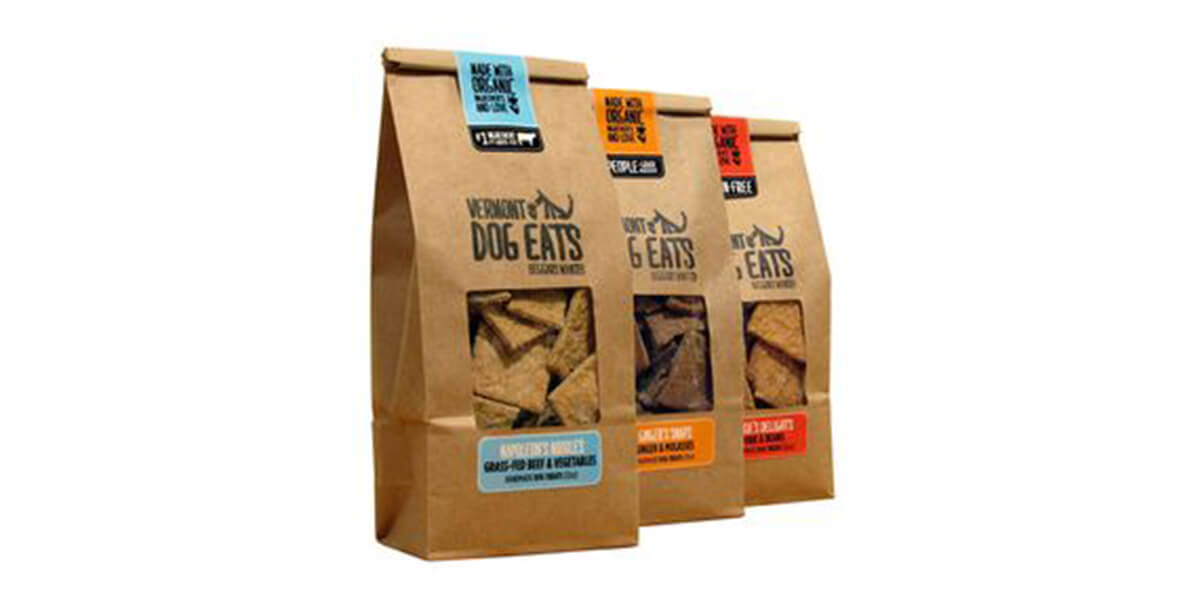
10. Special options for compostable and biodegradable stand-up pouches
Depending on need and application, custom compostable and biodegradable stand-up pouches may have the following additional features.
- tear opening
- gusset
- perforation
- handle
- zipper
- valve
- tie
Often, these features make the bag more effective in its specific application.
11. How long does it take for compostable and biodegradable stand up pouches to decompose?
These stand up pouches take about three to six months to fully decay. This is much faster than synthetic foils, which can take many years. Note that exactly how long a recyclable bag takes to decompose depends on many factors, such as the heat and steam present.
However, these bags are not always as ecologically responsible as they seem. They are made from petrochemical resources comparable to traditional plastics. In this case, the added composite material causes them to gradually crack when heat or oxygen is present. They are then destroyed, often into a slurry of toxic chemicals.
Bioplastics, which consist of cornstarch and additional plant ingredients, are even better. They release carbon monoxide as they decay. However, they simply emit carbon that is consumed by the plants that formed them in the first place. Therefore, the net impact on the setup is close to zero.
The breakdown of compostable and biodegradable stand-up pouches depends on a variety of factors. If you keep them in a microbe-rich environment to help them rot, it can take a while for the pouches to fully decompose.
In contrast, conventional plastic bags take a long time to fully decompose. The question is where the pouches end up. Proper disposal of biodegradable plastic bags and making sure they are left to rot in the right environment is the only way to ensure they break down completely.
Biodegradability is therefore considered to be disrupted by natural bacteria such as fungi and microorganisms. However, they cannot be broken down in a marine environment like the sea. That’s why they usually float around oceans and other bodies of water intact.
However, compostable bags won’t rot if left anywhere outside of a composting facility. This includes landfills (where most plastics end up rotting. This is why landfill biodegradable bags are a better option when it comes to minimizing your ecological footprint
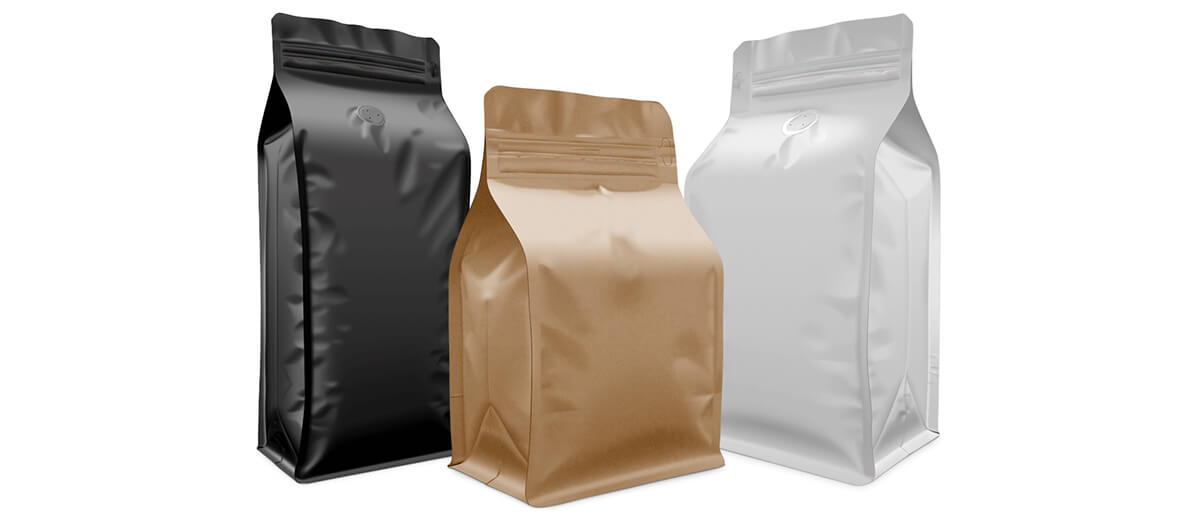
12. Compostable and biodegradable stand-up pouches should undergo various types of tests
In order to ensure their quality and safety, compostable and biodegradable stand up pouches undergo different tests. These tests include:
1) Product/package compatibility test
This is a test to determine resistance to chemical or physical changes resulting from product interactions. You’ll find it mostly done for packaging laminations.
2) Compression test
This requires exposure to different stressors at different times.
3) Seal test
This requires testing the fusion seal that secures the plastic in the packaging material. This is tested on a molecular level.
4) Puncture resistance test
This method tends to determine the pressure required to pierce flexible packaging material. It takes into account ASTM standards.
- water bath test
- Stretching test
- Burst test
This is done by applying pressure to the bag. It’s done at a controlled pace. As air (pressure) is introduced, the internal pressure will be maintained for the specified duration. The purpose is to determine the strength of the seal.
5) Drop test
This determines the height to which the bag can freely fall without failure. Heights and surfaces are predetermined. The most widely used test is the 1A 10-drop test.
13. Benefits of compostable and biodegradable stand up pouch nozzles and accessories
Both consumers and manufacturers benefit from the use of compostable and biodegradable stand-up pouches with nozzles and accessories. Some benefits for manufacturers: Nozzles and fittings reduce manufacturing and production costs. This is because it provides flexible packaging.
- less material used
- lighter weight
- low storage space and shipping costs
The benefits for consumers are:
- Extend product shelf life, thereby saving dispensable revenue
- Stand-up pouches with spouts and accessories are convenient due to the precise dispensing of substances and reduced mess
- Enhanced safety and security due to being kid-friendly
- Convenient travel
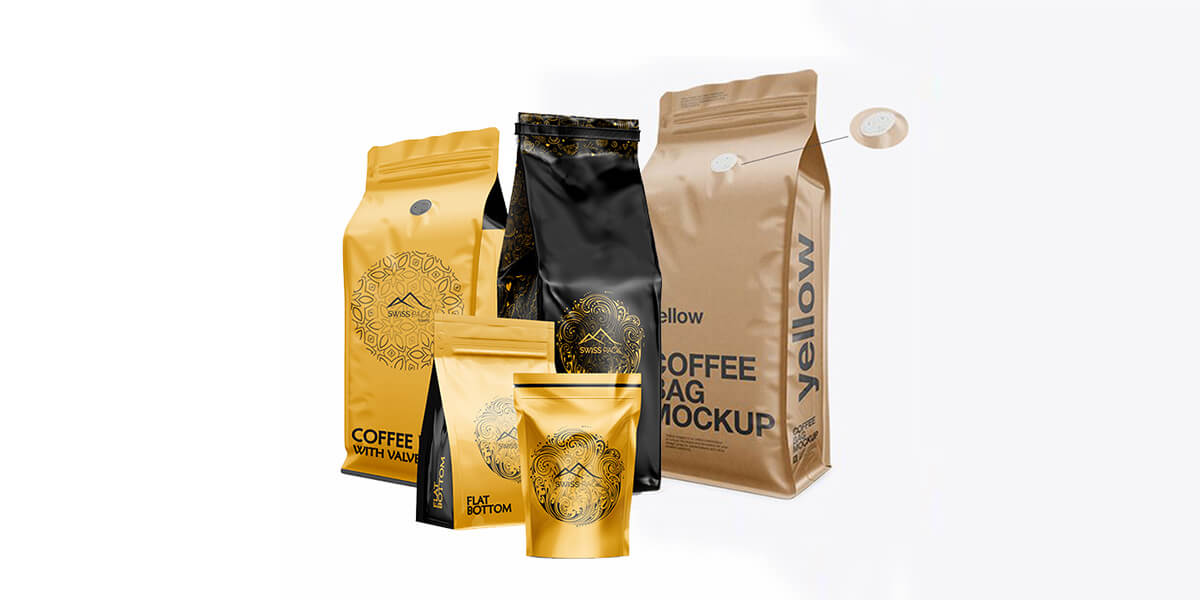
14. Lead time for compostable and biodegradable stand up pouch manufacturing
Compostable and biodegradable stand-up pouches take six weeks to make. However, the duration varies according to the different requirements of customers. Non-printed bags have shorter production and shipping times.
Custom-printed compostable and biodegradable stand up pouches take longer. This is due to the additional functions and printing process requiring more time and precision. Also, the production time for large orders is longer compared to small batch orders.
15. How to ship compostable and biodegradable stand-up pouches?
As customers become more aware of how they consume, they are not only concerned with food that is maintainable. However, the product strives to respond to ecology in all the features of its process. Shipping is an important part of running an online business, with approximately 600 million substances released every day in the US alone.
The way these acquisitions are packaged and shipped makes a big difference in the world – and customers take serious notice. Here’s how businesses can package, supply and fulfill their orders for e-commerce with the environment in mind.
Here are some of their tips on sustainable packaging and shipping:
- Provides carbon-neutral transportation by weighing emissions
- Ship products in bulk
- Use sensible packaging that can be reused
- A return program must be provided for empty item containers
- Reprocessing on behalf of suppliers and providing material for transport
- Work with traders to reduce disparate shipments and limit returns
- Narrow down the packaging
Compostable mailing bags offer an ecological mailing solution. Compostable bags offer a healthier explanation for the environment when it comes to choosing your mailing preference because they are compostable. This item can only be used once due to the double adhesive stripe seal as an additional ecological response.
Therefore, the bag can be used twice and is fully compostable. Therefore, people don’t have to worry about the waste they generate while shipping their products. Mailing bags are adaptable and cost-effective, so they are used in many different businesses. In businesses that ship many products each day, the use of compostable or biodegradable bags can make a significant difference.
Currently, producers are more concerned about the environmental impact of such operations. Compostable mailers offer an option that allows businesses to choose a non-toxic option for their transactions. These bags are made from bio-resin that breaks down over time. So it doesn’t sit in landfills for years. Compared to plastic bags, it is a perfect alternative.
Compostable delivery bags are just as strong as regular plastic bags. Therefore, a person does not have to worry about whether their items will reach their destination. People need to transport their belongings comfortably and be sure they will reach their destination safely.
These bags are designed to be durable enough not to be punctured causing items to be lost in transit. When choosing mailing bags, you need to verify that they are durable to ship your products safely. Mailing bags give customers the option to send oddly shaped items in a package instead of a box to save on postage.
Many shapes and sizes exist to accommodate the shipping of a wide range of items. Mailing bags allow businesses to save organic waste from landfills. Promises are set and their consumers will raise it. Compostable bags are a healthier way to get rid of the trash.
Some industries remove waste through reprocessing, while others use composting to remove waste. Eco-conscious businesses are constantly looking to various technologies for change. Using compostable mailing bags is an even better adventure, and it’s very affordable.
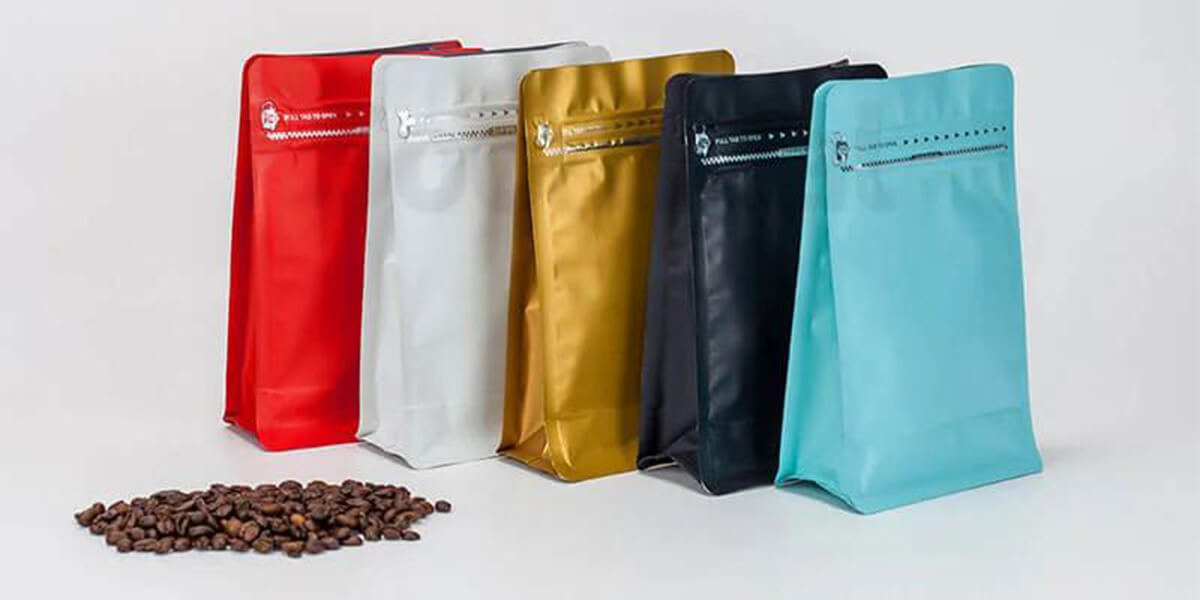
16. How to Fill and Seal Compostable and Biodegradable Stand Up Pouches?
Required requirements included: a manual impulse heat sealer, selected stand-up pouches and a sleek workspace. The sachet should be filled from the top. Closing the bag requires a seal. To use the machine, place the filled bag between the seals and press lightly for about 3 seconds. The bag now has a professional, airtight, violin-marked seal.
When the bag does not seal properly, begin to gradually adjust the heat until a wide seal is achieved. Heat fastening is an optional element and is not essential for the use of pouches as they contain a zipper closure that can be closed.
17. Shelf life of compostable and biodegradable stand-up pouches vs traditional stand-up pouches
The shelf life of most stand-up pouches depends primarily on the product being packaged. In this case, the most important consideration is the amount of oxygen. The second thing that needs to be done is to use a barrier film. Conventional bags are not formed with barrier films. Generally speaking, compostable and biodegradable stand up pouches can be used normally for 2 months.
This is when the compostable plastic used is thought to break down mechanically after this stage. It is essential to store compostable packaging materials in a cool place. This is because direct exposure to heat, sunlight or steam shortens its shelf life.
Compostable and biodegradable stand-up pouches require a lively microbial environment, such as a compost pile, to decompose. When placed in a commercial composting environment, it first shreds and then biodegrades into CO2, H2O and biomass without creating hazardous waste.
Compostable packaging ranges must comply with European standards guaranteeing that the material breaks down within twelve weeks. That means it should biodegrade within six months in a commercial composting situation. The actual compost time for most of our compostable products may be shorter than this.
In local composting environments, the composting process will take a lot of time because these environments are not compatible with high temperatures. Timing will vary based on composting conditions (eg, location, size, temperature, humidity, microbes).
18. Optimal internal volume/capacity for compostable and biodegradable stand-up pouches
To be heat-sealable, the innermost layer must be polyethylene. Many companies will try to cut corners to save on the cost of each bag. Do not choose any other form of the inner layer, but preferably at least 100 microns thick.
19. Compostable and biodegradable bags for your products
Properly sized stand-up pouch packaging helps save on shipping costs since the bag needs to be much lighter. This will allow more products to be shipped with less packaging while saving available space. So, a good-sized bag shouldn’t take up as much space as a bottle.
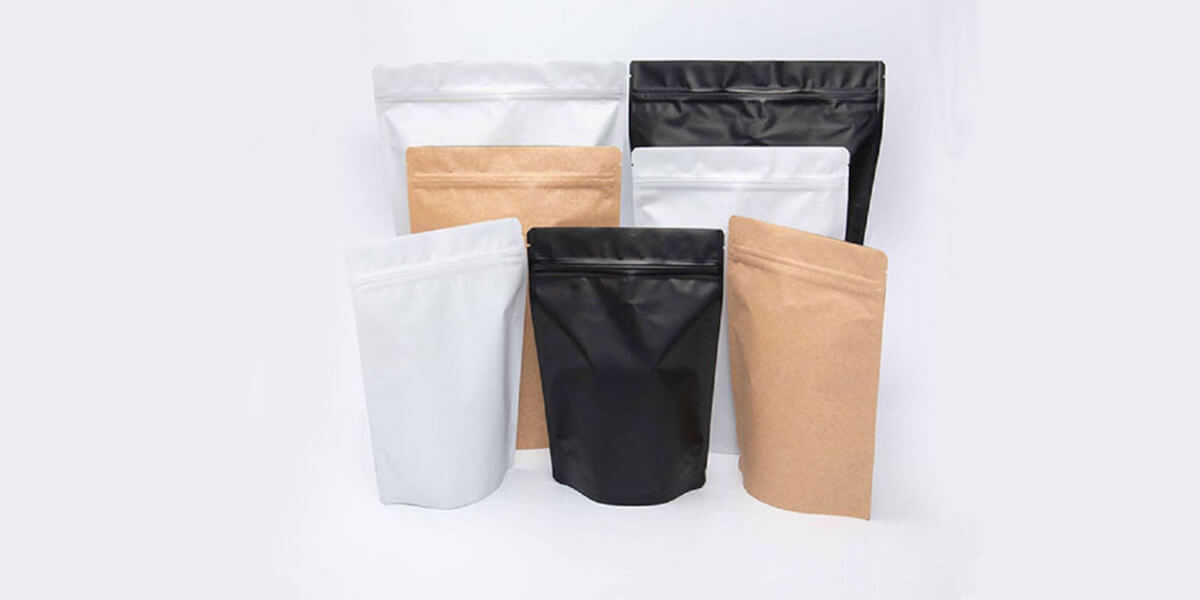
20. Determining the barrier level required for compostable and biodegradable stand-up pouches
The stand-up pouch has a total thickness of 6.1 mils and consists of kraft paper plus two other layers to form the transparent window and the innermost layer for packaging. For example, we use materials with a low carbon footprint and minimal ecological impact. The pouch is made of flax fibers and has very little energy.
21. Design drawing requirements for compostable and biodegradable stand-up pouches
Design drawing requirements need to be sent in time and meet certain specifications. Some of them are:
1) File format
Accepted file formats are:
- Adobe Illustrator
- Package postscript
- Adobe Photoshop
2) Editable documents (Portable folder)
Please make sure the image is embedded in the design file. You will need to send a soft proof that contains a flattened jpg or PDF. After sending, our graphic designers may make revisions to the best possible quality.
3) Font
Fonts should be converted to outlines in the document. Alternatively, it can be included in the design file. This is important to ensure that the design remains intact. The only downside is that the text cannot be modified. When considering typeface, choose an outline font.
4) Color
Acceptable colors are Pantone color formats. Color codes should include Pantone colors. Print samples are recommended but not mandatory. RGB format will not be accepted under any circumstances. You need to be aware that CMYK colors will be converted to Pantone. However, color consistency may vary slightly. You will be asked to include a color key in the image.
5) Bleeding
Bleeding is the overlap of print beyond the edges. Recommended bleed is 1/8 in.
6) Resolution
The recommended resolution is 300 dpi (100%) at full size. As a result, there will be no pixelation.
7) File transfer
You should submit artwork via email, WeTransfer, or google drive.
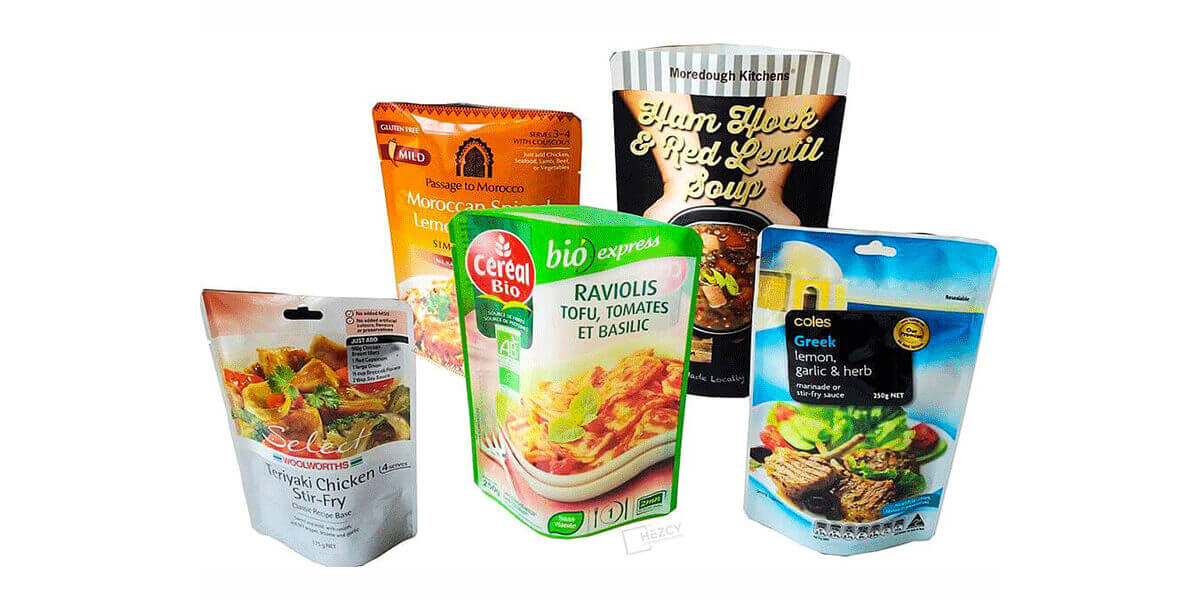
22. Printing method for compostable and biodegradable stand-up pouches
The printing method used is:
- Flexographic printing
- digital printing
- gravure printing
23. Custom Printed Compostable and Biodegradable Stand Up Pouches with Blank Bags
Compostable and biodegradable stand up pouches have become a style and status statement in the industry today. This is due to taking the time and determination to design a good-looking paper bag for their merchandise.
With a beautiful paper bag advertising the company’s logo, the consumer provides a system of free publicity and endorsement. Custom-printed bags can help enhance brand equity in a number of ways. Unlike blank bags, they are large images of advertising messages.
Reusability is another aspect of the reusability of advertising plastic bags that contain logos. Unlike blank bags, customers often like to reuse them many times before they rot or wear out. Note that there is no printing on the blank bag. Their effectiveness in marketing and advertising is limited. They provide limited product visibility in retail displays.
As a packaging solution, printed compostable and biodegradable stand-up pouches perform better. They provide higher visibility, promote brand awareness and growth, and are generally good-looking.
However, their production and procurement costs are high. They also take longer to manufacture. Bank stand-up pouch options are usually readily available. They require less time and resources to produce and therefore cost less.
24. Steps to consider when choosing compostable and biodegradable stand up pouches
When choosing compostable and biodegradable bags, you need to consider the following factors.
1) Certification
You need to consider whether these bags have been certified and tested by the relevant agencies.
2) Chemical composition
You need to check the chemical ingredients and make sure they are not harmful to human health. Some chemicals that are harmful to human health are bisphenols and phthalates.
3) use
Compostable and biodegradable stand up pouches should be considered for their intended use. Compostable bags are made with specific applications in mind. Some of these are suitable for dry goods, while others are suitable for semi-liquid or liquid materials.
4) Storage
You’ll notice that some compostable and biodegradable bags can be stored in the freezer. Others, on the other hand, cannot be stored in cryogenic areas without damage. Other factors to consider include size, shape, additional features, and cost.
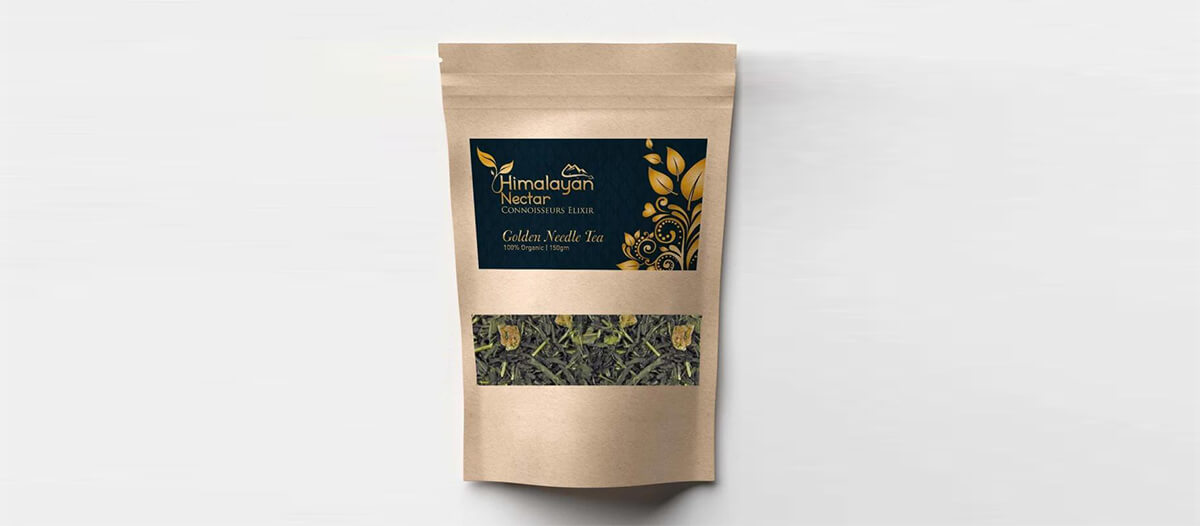
25. Proper storage conditions for compostable and biodegradable stand-up pouches
It is crucial to store compostable packaging material in a cool, dry place away from sunlight or steam, which can shorten its useful life.
26. Possible limitations of compostable and biodegradable stand-up pouches
Plants such as soybeans are used to make biodegradable plastics. Therefore, there is a risk of contamination as the crops may contain pesticides while they are still on the farm. Another limitation is the need for expensive equipment during processing and recycling. Industrial processing is expensive for those requiring pyrolysis. It requires potentially problematic equipment.
Third, the confusion about biodegradable plastics and non-biodegradable plastics poses a risk of pollution. The main challenge is that many people don’t know how to tell the difference between the two. So they end up mixing them together, which can lead to contamination and difficulty in recycling.
Another limitation is that they could emit methane in landfills as they decompose, which can be high and contribute to climate change. Biodegradables do not solve the problem of ocean pollution because they do not break down in the water. Plastic ends up floating in the water, which poses a health threat to marine life.
Another limitation is the need to produce large quantities of crops to produce these plastics. Additionally, they are more expensive to produce than traditional plastics. Finally, biodegradable plastics may contain metals, which are released during the breakdown process.
We strive to provide you with the highest quality compostable and biodegradable stand-up pouches to meet your unique application needs. We understand all your needs for compostable and biodegradable stand up pouches.

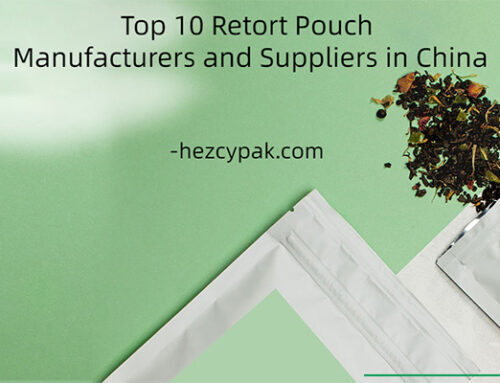



Leave A Comment